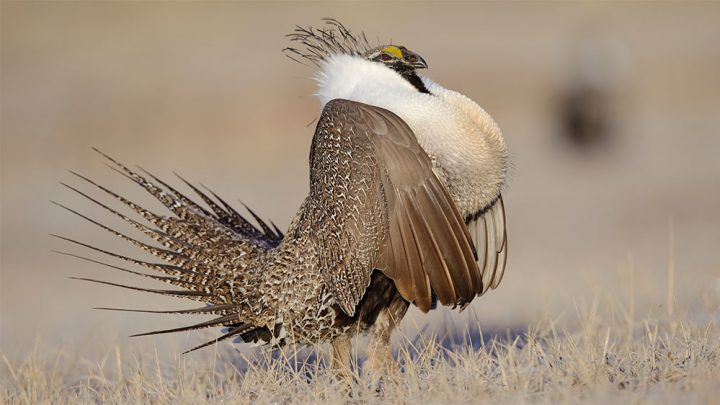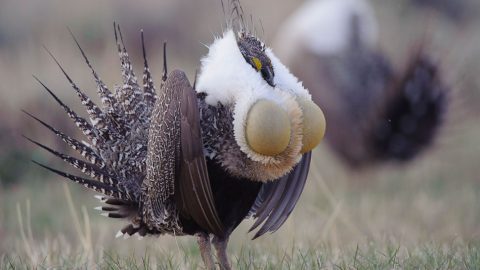Federal Decision Not to List Greater Sage-Grouse Shows Conservation Is Working. Here’s Why
September 22, 2015

Related Stories
Today the U.S. Fish and Wildlife Service announced its decision not to grant Endangered Species Act protection to the Greater Sage-Grouse. The U.S. Department of the Interior also finalized the rangewide strategy (in the form of several Environmental Impact Statements) for sage-grouse habitat on Bureau of Land Management and U.S. Forest Service lands in 10 western states. These decisions come after about a decade of cooperative conservation work and unprecedented coalitions among state and federal agencies, conservationists, energy companies, and private ranchers. States have invested more than $200 million in sage-grouse, and the federal government has invested $300 million—with another $200 million on the way.
Dr. John W. Fitzpatrick, Louis Agassiz Fuertes Director of the Cornell Lab of Ornithology, says:
“This decision by USFWS is an important milestone in the history of the Endangered Species Act. It shows how the Act can be effective, not only when it calls for emergency regulations to save a species, but also as an incentive for governments, conservation groups, and private landowners to collaborate towards conserving a species before its populations become critically endangered. To all of those in the West who are working together, amidst so much controversy, to preempt a listing through proactive conservation, we say, ‘Great progress so far—please stay the course.’
“Lawsuits may fly from both sides of the debate over sage-grouse conservation. But today we welcome this huge opportunity for science-based conservation groups to partner with federal and state governments as well as the ranching community to measure the effectiveness of management plans across all 11 sage-grouse states. We need to highlight the successes, and call out the shortcomings, always paying strict attention to demonstrable biological facts. For this reason, dedicated and intensive monitoring will be absolutely imperative in following through on the promise of today’s USFWS decisions.
“The Cornell Lab of Ornithology stands ready to assist sage-grouse conservation efforts with all of our information science resources. Besides the obvious role of dedicated professional biologists in population monitoring, the coming decade provides a huge opportunity for citizen-scientists to contribute. For example, birders can seek out sage-grouse and other sagebrush bird species in all seasons and enter their sightings into eBird.
“The challenge now is to document how sage-grouse populations respond to management plans in both breeding and wintering areas, to make course corrections on habitat protection where necessary, and to structure dedicated resources for the long-term, as this is sure to be a decades-long effort. Today’s ESA decision isn’t the end, it’s the beginning of a phase requiring less arguing and even more doing. No doubt these management plans aren’t perfect, but they do provide a solid base for everyone to move forward boldly on behalf of sagebrush and sage-grouse conservation.
“In addition to monitoring, dire need exists for funding research into how to restore degraded habitats in the West, not just for the benefit of Greater Sage-Grouse but also for the other 350 species that rely on the sagebrush steppe. Simply restricting development in key areas will help, but we also need to revitalize native plant communities so we can restore the carrying capacity of the lands we’ve protected for sage-grouse.
“Finally, I hope that in all our discussions about sage-grouse in the coming months, we respect today’s decision as a victory for private landowners. Courageous ranchers throughout the range of the species have welcomed Greater Sage-Grouse onto their properties, embracing the idea that this uniquely spectacular bird can coexist with economically viable private land use. Today’s decision underscores the continuing opportunity for landowners to take advantage of incentives and benefits for sage-grouse conservation on private land. I hope we are entering a new era in which collaborative conservation for a potentially endangered species is considered to be a financial opportunity for private landowners.”


All About Birds is a free resource
Available for everyone,
funded by donors like you





